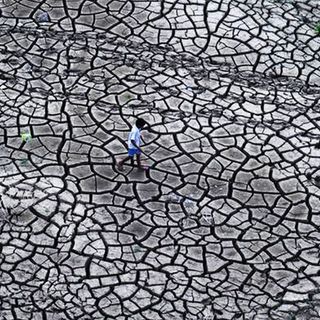New research suggests the Amazon rainforest, a lush ecosystem the size of Australia, may be absorbing less carbon from the atmosphere than we previously thought. Even without the ravaging fires, the persistent loss of phosphorus from forest soil may be inhibiting the growth of new plants needed to reach expected future estimates of the forest’s capacity for carbon absorption.
The finding casts doubt on recent climate change predictions, and not in a way that buys us more time; the international team of scientists behind the new study says phosphorus deficiency in Amazonian soil, cuts by approximately half many existing estimates of the region’s carbon dioxide absorption.
Carbon dioxide (CO2) is a greenhouse gas that enters the atmosphere primarily from burning fossil fuels. Its “rate of increase over the past century is unprecedented,” according to the Intergovernmental Panel on Climate Change, and is the main driver of climate change.
Related on The Swaddle:
Climate Change Will Soon Zap Rice of Nutritional Value
“Most predictions of the Amazon rainforest’s ability to resist climate change are based on models that have outdated assumptions; one of those is that a sufficient supply of nutrients, such as phosphorus, exist in soils to enable trees to take in additional CO2 as global emissions increase,” study co-author Jennifer Holm, a researcher with the U.S. Department of Energy’s Lawrence Berkeley National Laboratory, said in a statement. “But in reality, the ecosystem is millions of years old, highly weathered, and therefore depleted of phosphorus in many parts of the Amazon.”
Phosphorus is a nutrient found in soil that is critical to plant growth. It is a finite resource that the Earth naturally recycles: plants absorb phosphate from soil; animals eat the plants and absorb phosphate; when plants and animals die and decompose — a near-constant event on the lower levels of a thriving rainforest — phosphate returns to the soil. The problem with this cycle in the Amazon is that phosphate from decaying organic matter is often rained into waterways before it can be absorbed and re-enrich the soil, leading to sustained loss of phosphate and degradation of soil.
In 2015, NASA scientists detailed how phosphorus-rich dust from the Sahara desert in Northern Africa is regularly carried by wind currents to fertilize the Amazon rainforest 3,000 miles away, helping to compensate for the rainforest soil’s phosphorus degradation and to sustain the lush vegetation there. However, as Vox reported at the time, “scientists are still, for instance, trying to figure out how long the Sahara has been fertilizing the Amazon — and how far into the future it will last.”
Additionally, increased forest clearing and farming have accelerated the loss of phosphorus in Amazon soil; crops are obviously harvested, rather than allowed to decompose, meaning more phosphorus leaves the soil than is returned. According to a deep dive into the state of the Amazon by The Intercept, “most pasture [cleared from the rainforest] is degraded and abandoned within 10 to 15 years, meaning … more forests must be cut to keep ahead of the processes triggered by the last cutting, which removed the soil’s natural source of nutrients.”
The new study concludes that the continued loss of phosphorus from Amazonian soil is resulting and will continue to result in less new plantlife able to absorb carbon dioxide from the atmosphere.
“Our improved models now take into account these complexities, and could serve to help paint a more realistic portrayal of how the Amazon, and the tropics in general, will be impacted by climate change and the ability of trees to remove greenhouse gases from the atmosphere,” Holm said in a statement.




